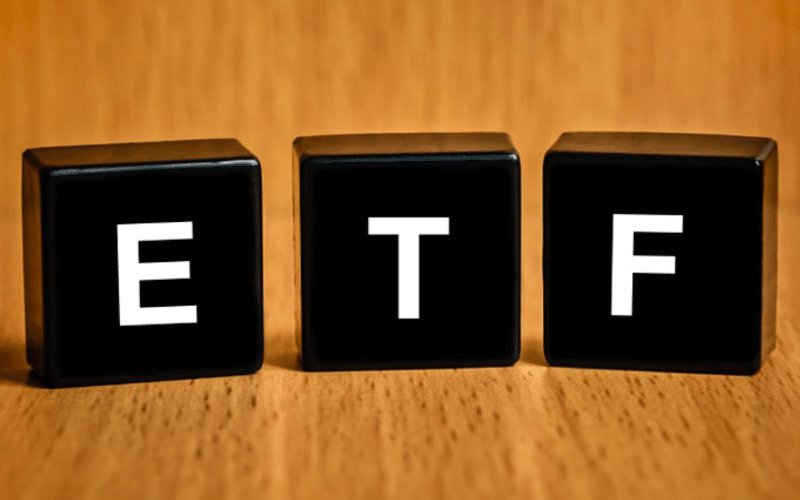
Exchange Traded funds or ETFs have completely revolutionized the world of trading and investing because of the number of characteristics they offer. These include tax efficiency, trading flexibility, transparency, diversification and lower costs when compared to other investment vehicles.
What are ETFs?
ETFs or Exchange Traded Funds are pooled investment vehicles which are used to invest in a portfolio of securities. Most of them are passively managed to pursue cost effective returns. The returns generally correspond to the risk and return of a specified index. There are actively managed ETFs as well which implement flexible trading strategies to pursue other targeted investment outcomes. An ETF trades on an exchange in a similar fashion to stocks.
ETFs exist in the market place in two ways. They exist in what is known as the primary market, where certain institutional investors access them. They also exist in the secondary market, where individual investors purchase and sell them. They offer the opportunity to invest in a portfolio of securities providing the same liquidity and trading flexibility of stocks and the same diversification benefits of mutual funds.
10 Tips for ETF Trading
Understanding liquidity
Many people have the misconception that the liquidity of an ETF is determined by average daily volume. Instead it is mainly determined by the liquidity of the underlying securities. When the underlying securities get too difficult to trade, the market maker’s costs may increase. This results in wider bid-ask spreads than usual. Thus, when trading or investing in ETFs, always remember that the liquidity of the underlying securities is the primary market liquidity while the average daily volume is its secondary market liquidity.
Using limit orders to seek a balance between price and timely execution
Limit orders can be used to set a target execution price. The priority is securing a certain price instead of fast execution. For instance, when selling ETFs using limit orders, use it to specify the price equal to or less than the bid price. This should not be less than what you want to receive. This likelihood that your trade will be made, increases. This also avoids the risk of the client receiving less than desired.
Trading ETFs when stock market is open but bond market is closed
ETFs trade similarly to stocks, even if they track bond indexes. Thus, whenever stock markets are open, fixed income ETFs also trade, even if the bond market is closed. As a result, there isn’t any pricing source for the market maker.
Time as a Factor
ETFs trading in Canada and the U.S. can be constructed in part or in whole by international securities, which usually trade in international markets. As a result, when these securities trade, markets in North America remain open while the international market is closed for trading. When those markets are closed, the flow of information continues, which may affect the security prices which affect the ETF price. Therefore, it is preferred to trade ETFs during the trading hours of the underlying securities.
Looking at Top ETF Holdings
When trading ETFs, it’s always a good idea to take a look at the top ETF holdings for the particular financial quarter. For 2020, here are some of the top ETF holdings one can consider.
- ProShares VIX Short-Term Futures ETF (VIXY)
- Vanguard S&P 500 ETF (VOO)
- Invesco QQQ Trust (QQQ)
- Vanguard High Dividend Yield (VYM)
- SPDR S&P Biotech ETF (XBI)
Staying on top of news
ETFs can briefly trade at a discount or at a premium based on the net asset value of their underlying holdings. Such swings are a result of statements from central bands, the release of economic indicators as well as earnings and other financial news from companies which are large constituents of the particular ETF.
Considering market volatility
Bid-ask spreads are affected by market conditions. During volatile periods, fewer units are listed at best- bid and best-ask prices. This increases the importance of using an appropriate order type and monitoring your trades.
Consider the size of the trade
When placing large trades of an ETF at a particular time of day, you may not get the best price if you execute the transaction online, despite using a limit order. This may also result in higher trading costs.
Watching the clock for international ETFs
International ETFs which are traded in the US tend to be closer to the value of underlying securities, especially when their respective markets are open and overlap with domestic trading hours. Most European markets close between 11:00 to 11:30 am ET. Consider the price of an NYSE-listed international ETF whose local market is closed. It may reflect new information with the potential to change the premium or discount relative to the ETF’s stated NAV.
Using a Block Trading Desk
To improve the execution of a large order, you may use a block desk which provide access to sources of liquidity not generally visible on the stock exchange. They facilitate large orders without those transactions upsetting a security’s liquidity or price on the open market. Any trade exceeding 10000 shares is considered a large order.
Considering Costs
Operating costs vary among ETFs. They generally cost less to operate compared to index and actively managed mutual funds. Also, ETFs do not incur administrative costs as they trade through brokerage firms. All of this keep the total expense ratios for ETFs at a low level.
Final Thoughts
Currently ETFs are now traded on virtually every major asset class, currency and commodity in the world. There are newer innovative ETF structures that embody a particular trading strategy or investment. They offer flexible trading, better tax efficiency, greater transparency and lower operating costs compared to traditional open-end funds. However, certain trading costs and learning complexities associated with the product make it a difficult instrument to understand at first. This is why it is crucial for traders and investors to grasp the concept of ETFs before attempting to trade with them.







